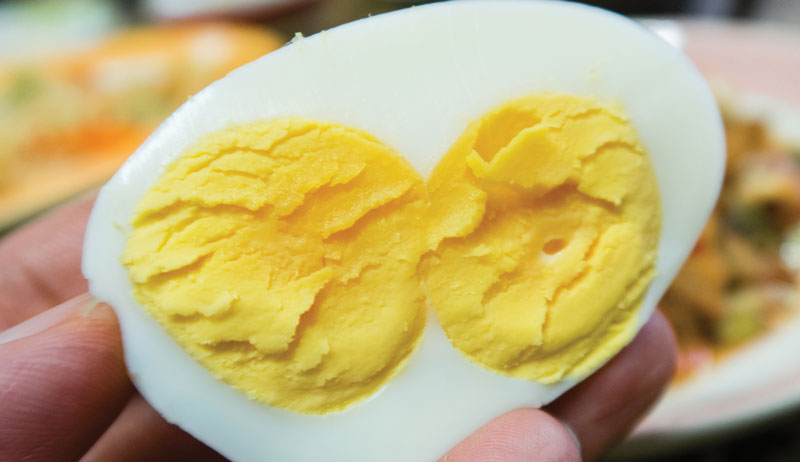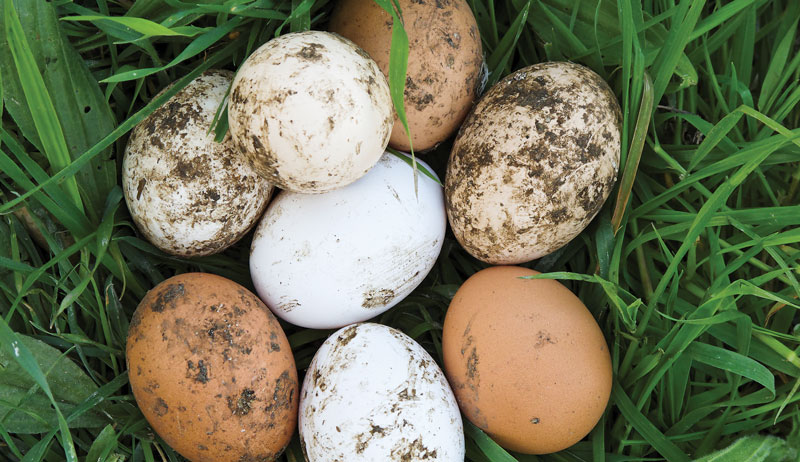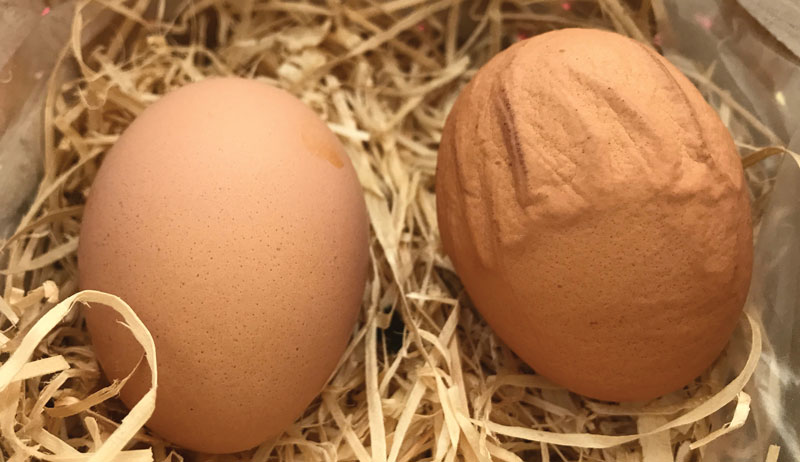Herding dog breeds are some of the most popular dogs kept on farms and ranches for their help in moving livestock. Whether you enjoy caring for backyard chickens as a hobby or raising cattle for profit, this feature will help you choose the herding dog to fit your needs.
#1 Border Collie
The Border Collie is the most intelligent and popular of the herding dog breeds. Highly energetic, talkative, playful and full of stamina, Border Collies must have a job to do. They also require several hours of vigorous exercise and mental stimulation daily.
Bred to herd sheep, this high-energy breed herds anything that moves. Border Collies are workaholics exhibiting a stronger herding style than other herding dog breeds. Because they were bred to herd sheep, Border Collies do not tend to nip at the heels of livestock, making this breed ideal for sheep, cattle, pigs, poultry and even ostriches.
Border Collies are natural headers (meaning they work from the front of the livestock). However, some individuals may also work as heelers (herding the livestock from behind).
Border Collies also use their intense eyes to help herd livestock. To do this, they crouch on the ground, staring down the animal. Next, while crouching, they take a few steps toward the livestock before springing into top speed.
#2 Australian Cattle Dog
Also known as “cattle dogs,” the Australian Cattle dog is another popular choice for herding dog breeds. Cattle Dogs are known for their high intelligence, active mind, and ease of training. These dogs require plenty of exercise (both physical and mental stimulation) and companionship, and they must have a job.
Cattle dogs are also affectionate and playful pets with their human family, but they can be aloof and sometimes aggressive with strangers.
Bred to herd cattle, Australian Cattle Dogs are natural heelers, working from behind the livestock, nipping at the livestock’s heels to move them along in the intended direction. Cattle Dogs work silently and do not feel the need to force bark to move the livestock along.
Cattle Dogs are a sturdy breed that can work long hours driving cattle. However, they thrive on human interaction and should not be left without companionship in the fields or pastures all day.
Cattle Dogs are also famous for their superior ability to move cattle and sheep.
#3 Australian Shepherd
Australian Shepherds, often called Aussies, are the only dog in the herding dog breeds that originated in America. Aussies are intelligent, affectionate, hardworking, loyal, protective, adaptive, and active. Even though many current-day Aussies have been bred more for companions than herding, these dogs still possess a strong herding instinct.
Aussies were bred to work large flocks of sheep without causing the flock to fear. In doing this, the breed has developed its unique herding style. While some Aussies use a strong, keen eye to herd like a Border Collie, many others have a loose-eye approach (they don’t make eye contact with the livestock). Aussies are excellent at herding cows, geese, chickens, and other livestock but excel at herding sheep.
Working Aussies should never nip at the livestock, preferring to bark rather than nip at them. If barking doesn’t get a particular sheep moving, the Aussie will hit the sheep with a front paw or shoulder.
#4 Shetland Sheepdog
One of the best herding breeds for hobby farms, the Shetland Sheepdog has grown in popularity since its origin in the early twentieth century. Shelties are lively, alert, loyal, active, playful, highly trainable, gentle and eager to please.
Shelties are agile, alert and intelligent dogs. What sets this breed apart from other herding dogs is that they are neither headers nor heelers. Instead, Shelties prefer to work in a “gathering” style, working in circles around the livestock, gathering and sending them in the right direction. The breed is known for its gentle herding tendencies.
The breed excels at herding sheep, cows, and ponies and is considered one of the best breeds for herding poultry.
#5 Pembroke Welsh Corgi
Pembroke Welsh Corgis are one of the most popular cattle dogs among herding dog breeds. They are known for their tenacious, friendly personalities and willingness to please their owners.
Corgis were bred to herd cattle, nipping at their heels to make the cows move along. This particular style of herding is called heeling, making Pembrokes a part of the herding group known as heelers. While Corgis can herd anything from cats, chickens, ducks, sheep, or goats, this breed excels best at herding cattle.
From their small stature, robust and stubborn nature, constant barking, and heeler style of herding, Corgis make ideal dogs for cattle ranches and farms.
#6 Rottweiler
Rottweilers are the most overlooked of the herding dog breeds as they are usually considered law enforcement dogs more than herders. But these mighty dogs might surprise you. Good-natured, devoted, obedient and alert, Rottweilers are fearless dogs with a strong desire to protect their home, family, and livestock.
Rottweilers are natural herders and generally do not need to be trained. They have a natural gathering style and a strong desire to control. Rottweilers typically show a loose eye while maintaining a strong force while working with livestock.
One of the most interesting things about Rottweilers’ herding traits is their ability to change their style to suit the livestock they are herding best. Rottweilers excel at herding sheep, goats, and cattle.
#7 Belgian Shepherd
Highly intelligent, alert, sensitive and playful, the Belgian Sheepdog is less prevalent in the U.S. than the other herding dog breeds. However, these dogs are hardworking and versatile herders.
Belgian Shepherds work well with tame livestock, barking at the front of the livestock before going around to herd the livestock from behind. While they excel at herding various livestock species, these dogs tend to nip, so they may not be ideal for herding poultry and sheep.
While not all individuals of these herding dog breeds excel at herding, most herding dogs naturally desire to herd and will become an essential part of your farm or ranch.
This article about herding dog breeds was written for Hobby Farms magazine. Click here to subscribe.










 Another key to her relationship with photographers is being respectful and timely with communication. Her goal is to always answer within an hour of receiving messages. She communicates with clients and photographers. Being timely to photographers is especially important because as the third party in the conversation, dates and details need to be set for others. “I’m careful not to guarantee anything being in bloom. We say there will be something blooming all of June-September,” says Lacie. Working with nature, she has learned anything can happen.
Another key to her relationship with photographers is being respectful and timely with communication. Her goal is to always answer within an hour of receiving messages. She communicates with clients and photographers. Being timely to photographers is especially important because as the third party in the conversation, dates and details need to be set for others. “I’m careful not to guarantee anything being in bloom. We say there will be something blooming all of June-September,” says Lacie. Working with nature, she has learned anything can happen.









